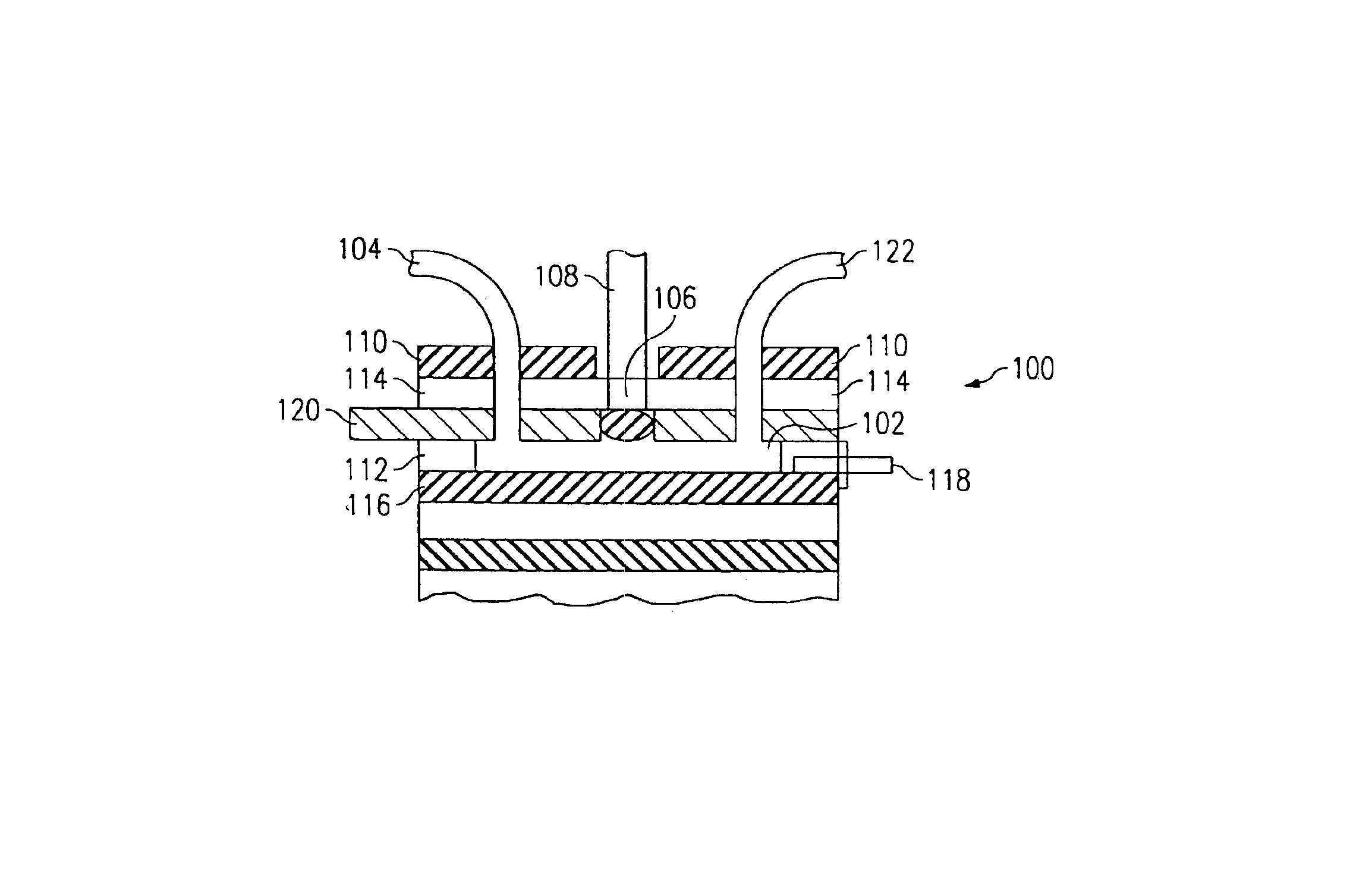System for directed molecular interaction in surface plasmon resonance analysis
a surface plasmon resonance and molecular interaction technology, applied in the field of analytical sensor systems, can solve the problem of limited and achieve the effect of improving the sensitivity of the substance to be analyzed
- Summary
- Abstract
- Description
- Claims
- Application Information
AI Technical Summary
Benefits of technology
Problems solved by technology
Method used
Image
Examples
example
TNT E-Field Assay
Disposable gold-coated glass slides are used as the surface plasmon resonance (SPR)-active surfaces. Other surfaces and coatings known to be compatible with SPR may be alternatively employed. The slides are prepared by depositing 2 nanometers of chromium and 50 nanometers of gold (Au) onto 0.008-inch thick borosilicate glass (Erie Scientific, Erie, Pa.) cut to fit over the sensor surface. Both metal films are deposited by thermal evaporation (Varian model 3118, base pressure less than 2×10−7 Torr). The gold deposition rate is 0.8-1.0 nanometers / sec, and the chromium deposition rate is 0.1-0.2 nanometers / sec.
Gold-coated slides are stored in Fluoroware boxes in an uncontrolled laboratory ambient. Prior to the attachment of bio-films, the gold SPR surfaces may be routinely cleaned to enhance assay reproducibility. Disposable slides are cleaned with 0.1% Triton X-100 (a non-ionic detergent) and 0.12 N sodium hydroxide (NaOH). Slides are rinsed thoroughly with de-ionized...
PUM
| Property | Measurement | Unit |
|---|---|---|
| thick | aaaaa | aaaaa |
| thick | aaaaa | aaaaa |
| thickness | aaaaa | aaaaa |
Abstract
Description
Claims
Application Information
 Login to View More
Login to View More - R&D
- Intellectual Property
- Life Sciences
- Materials
- Tech Scout
- Unparalleled Data Quality
- Higher Quality Content
- 60% Fewer Hallucinations
Browse by: Latest US Patents, China's latest patents, Technical Efficacy Thesaurus, Application Domain, Technology Topic, Popular Technical Reports.
© 2025 PatSnap. All rights reserved.Legal|Privacy policy|Modern Slavery Act Transparency Statement|Sitemap|About US| Contact US: help@patsnap.com



